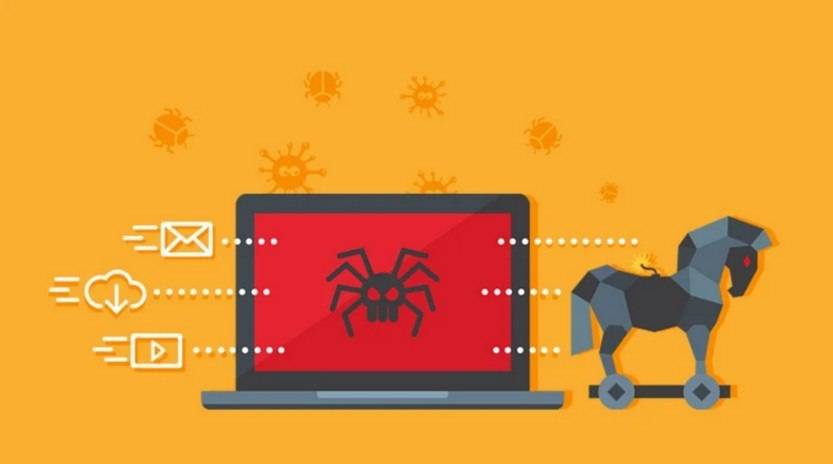Scams and phishing attempts have become increasingly sophisticated in recent years, with cybercriminals constantly finding new ways to deceive unsuspecting victims. One such scam that has been plaguing UK taxpayers is the ‘Your Refund Is Now Available’ phishing email. This article aims to shed light on this scam, how it works, what to do if you have fallen victim, and provide valuable insights to help protect yourself from falling prey to such scams.

What is the ‘Your Refund Is Now Available’ phishing email?
The ‘Your Refund Is Now Available’ phishing email is an email scam that targets UK taxpayers, particularly during tax season. The email appears to be from HM Revenue & Customs (HMRC), the UK’s tax authority, and claims that the recipient is eligible for a tax refund. The email typically includes official-looking logos, branding, and formatting to make it appear legitimate.
The goal of this phishing email is to trick recipients into providing their personal and financial information, such as bank account details, in order to claim the supposed tax refund. However, clicking on any links or providing the requested information can have severe consequences, including identity theft, financial loss, and unauthorized access to sensitive information.
How does the scam work?
The ‘Your Refund Is Now Available’ phishing email follows a typical phishing scam pattern. Here is a step-by-step breakdown of how the scam works:
- The scammer sends out a mass email campaign, targeting a large number of individuals.
- The email appears to be from HMRC and includes official logos and branding to make it look authentic.
- The email claims that the recipient is eligible for a tax refund and provides a link to claim it.
- Clicking on the link takes the recipient to a fake website that closely resembles the official HMRC website.
- The fake website prompts the recipient to enter their personal and financial information, such as their name, address, date of birth, and bank account details.
- Once the recipient enters their information, it is captured by the scammer.
- The scammer can then use this information for various malicious purposes, such as identity theft, financial fraud, or selling the information on the dark web.
What to do if you have fallen victim?
If you have fallen victim to the ‘Your Refund Is Now Available’ phishing email or any other phishing scam, it is crucial to take immediate action to minimize the potential damage. Here are the steps you should follow:
- Disconnect from the internet: If you suspect that you have fallen victim to a phishing scam, disconnect from the internet to prevent further unauthorized access to your information.
- Scan your device for malware: Run a scan with a reputable antivirus software, such as Malwarebytes Free, to detect and remove any malware that may have been installed on your device.
- Change your passwords: Change the passwords for all your online accounts, including your email, banking, and social media accounts. Use strong, unique passwords for each account.
- Contact your bank and credit card companies: Inform your bank and credit card companies about the scam and any unauthorized transactions. They can help you secure your accounts and prevent further financial loss.
- Report the scam: Report the phishing email to HMRC by forwarding it to phishing@hmrc.gov.uk. You should also report the scam to Action Fraud, the UK’s national fraud and cybercrime reporting center.
Technical details of the scam
The ‘Your Refund Is Now Available’ phishing email relies on various technical tactics to deceive recipients and make the scam appear legitimate. Here are some technical details of the scam:
- Email spoofing: The scammer spoofs the email address to make it appear as if the email is coming from HMRC. However, upon closer inspection, the email address may contain subtle differences or be from a completely different domain.
- Phishing website: The fake website used in the scam is designed to closely resemble the official HMRC website. The URL may also appear similar to the official website, but there may be slight variations or additional subdomains.
- Social engineering: The scam relies on social engineering techniques to manipulate recipients into taking action. The email creates a sense of urgency by claiming that the recipient is eligible for a tax refund and must act quickly to claim it.
Statistics on tax-related phishing scams
Tax-related phishing scams, including the ‘Your Refund Is Now Available’ phishing email, have been on the rise in recent years. Here are some statistics that highlight the prevalence and impact of these scams:
- In 2020, HMRC received reports of over 846,000 phishing emails, with a significant portion of them related to tax refunds.
- According to a study by the University of Portsmouth, tax-related phishing scams cost UK taxpayers an estimated £16 million in 2020.
- A survey conducted by HMRC found that 40% of respondents had received a suspicious email, text, or phone call claiming to be from HMRC.
Summary
The ‘Your Refund Is Now Available’ phishing email is a prevalent scam that targets UK taxpayers during tax season. It aims to deceive recipients into providing their personal and financial information under the guise of claiming a tax refund. To protect yourself from falling victim to such scams, it is crucial to be vigilant and follow best practices for online security. If you have fallen victim, take immediate action by disconnecting from the internet, scanning your device for malware, changing your passwords, and reporting the scam to the relevant authorities. By staying informed and taking proactive measures, you can safeguard yourself against phishing scams and protect your personal information.










